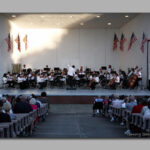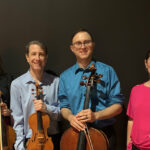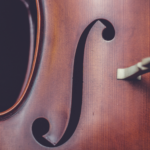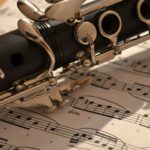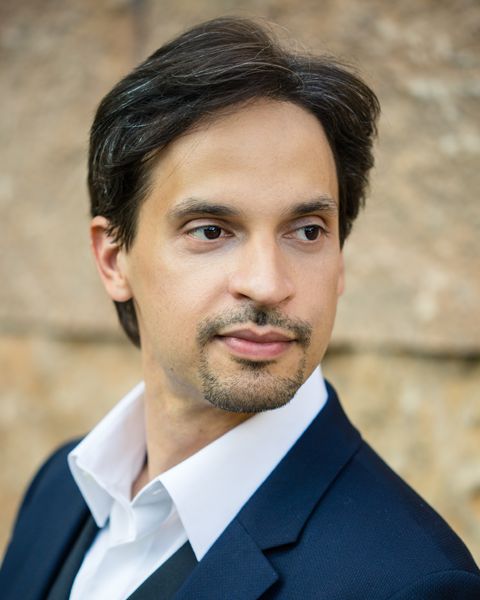MONTGOMERY, Jessie: Starburst
Instrumentation: Strings
Duration: 3 minutes
Montgomery is a native New Yorker, a graduate of the Juilliard School in violin performance, and holds a master’s degree from New York University in music composition. Her publications focus on various combinations of strings, and enjoy wide performance popularity with noted ensembles throughout the country. She is a devoted supporter of educational activities, and youth musical ensembles. Her musical style is, if anything eclectic, and is obviously a reflection of the enormous variety of musical art in her native New York City. Mahler once somewhat fatuously remarked something to the effect that a symphony should contain “everything.” Well, Montgomery dips into a remarkable universe of musical traditions, and reinterprets them in her own voice—just not all in one piece, of course.
Starburst was written in 2012 for the “Sphinx Virtuosi,” the professional touring ensemble of the Sphinx Organization. The latter supports young African-American string players in the Detroit area; Montgomery is composer-in-residence for the organization. Starburst takes its title from the composer’s feeling that the young members of the “Sphinx Virtuosi” are rather like “new stars in a galaxy.”
A brief, but scintillating, affair, Starburst is a winsome example of much of new music of the twenty-first century. Montgomery is typical of young contemporary composers unhindered by the siren calls that dominated “academic” music of the second half of the twentieth century: complexity, dissonance, adherence to “systems,” and a general tendency to value art that is esoteric and recondite. Rather, the cheerful staccato perpetual motion and constant interplay of a seemingly endless variety of ideas and motives creates a vivacious sparkle that perfectly encapsulates the title of the work. While not exactly clearly establishing a “key” for the audience, Starburst is a pleasant exploration of familiar scales, chords, arpeggios, and melodic ideas that anyone can enjoy and recognize. But, of course, adroitly woven together into quite a new composition. Who should know better than the composer herself how to describe it?
“This brief one-movement work for string orchestra is a play on imagery of rapidly changing musical colors. Exploding gestures are juxtaposed with gentle fleeting melodies in an attempt to create a multidimensional soundscape. A common definition of a starburst, “the rapid formation of large numbers of new stars in a galaxy at a rate high enough to alter the structure of the galaxy significantly,” lends itself almost literally to the nature of the performing ensemble that premiered the work, the Sphinx Virtuosi, and I wrote the piece with their dynamic in mind.”
—Wm. E. Runyan
©2021 William E. Runyan
TCHAIKOVSKY, Piotr Ilyich: Variations on a Rococo Theme, op.33, TH 57
Instrumentation: 2 Flutes, 2 Oboes, 2 Clarinets, 2 Bassoons, 2 Horns, Strings, Solo Cello
Duration: 18 minutes
Tonight we have the pleasure of performing Tchaikovsky’s Variations on a Rococo Theme for Cello and orchestra. Except we won’t really hear Tchaikovsky at all. If that sparks some confusion, please allow me to clarify.
Tchaikovsky was commissioned to write the “Rococo Variations” (the title most commonly used today) by a colleague, the virtuoso cellist Wilheml Fitzhagen, at the Moscow Conservatory. Out of respect for the great cellist’s abilities and reputation, Tchaikovsky gave the soloist permission to amend or edit the solo part if there were things that the cellist felt needed to be changed. Tchaikovsky may have regretted this, after all, because Fitzhagen changed the piece quite a bit! Reordering some of the variations, rearranging, moving a cadenza, and even getting rid of a variation!
While both Tchaikovsky’s original, and Fitzhagen’s rearrangement, are published, Fitzhagen’s edition became immensely popular and is the version most commonly performed today, and is the one that we will present at the Ashland Symphony. No less fantastic than Tchaikovsky’s original, I like to think of it as great work done by-committee.
A relatively short work for cello and orchestra (approximately 20 minutes), it is sincerely virtuosic for the cellist, and is also a direct homage that Tchaikovsky was paying to Mozart, a composer who was immensely influential in the composer’s life.
-Michael Repper
BEETHOVEN, Ludwig van: Symphony No.4, op.60 B-flat major
Instrumentation: 1 Flute, 2 Oboes, 2 Clarinets, 2 Bassoons, 2 Horns, 2 Trumpets, Timpani, Strings
Duration: 34 minutes
This symphony, along with the first and second symphonies of Beethoven, has not nearly the reputation of the rest of them. It especially stands in great contrast to its immediate predecessor, the monumental third—the “Eroica,” a work that changed forever the significance of the genre. Any great work of art must be judged by its intrinsic qualities, yet it often is illuminating to consider it in the context of the life of the artist. Beethoven finished this symphony in 1806 at a propitious time in his life; he was thirty-six years old, and widely recognized for his genius. Moreover, he had just finished a series of significant compositions that, had he never composed again, alone would have been sufficient to establish his reputation permanently. They include: his opera, Fidelio; the piano sonatas “Pathetique,” “Moonlight,” “Waldstein,” and “Appassionata;” the “Rasumovsky” quartets; the violin concerto; the first four piano concertos; and, of course, the aforementioned “Eroica.” What is more, he had endured some of his typically hopeless infatuations with unobtainable women, and was gradually coming to terms with his deafness—having considered suicide. And then comes the charming, light, fourth symphony, that for all the world seems like a reversion to the style of some ten years earlier when Joseph Haydn was the toast of the world and Beethoven was a journeyman.
The symphony begins with a slow introduction—a Haydnesque touch—that mysteriously wanders through some pretty remote keys: Bb minor and Gb major and minor. It concludes with a wonderful example of a Beethoven crescendo into the triumphal allegro of the movement proper. Note throughout this movement his imaginative use of the wind instruments in thematic statements. The slow movement eschews Beethoven’s wont to manipulate and develop, and simply unwinds a beautiful melody over a throbbing accompaniment. The usual dance-like third movement—a Beethovenian scherzo—entertains with his characteristic manipulation of accents that surprise. Ever the innovator—even in this modest work—he expands the usual form from three parts to five, more or less repeating the last two sections. The last movement is a kind of perpetual motion of continuous sixteenth notes, driving merrily along to a happy ending.
Although this symphony sits in the middle of works with considerable gravitas, Beethoven obviously felt a need to compose a cheerful work of affirmation as relief. It is not light in quality, only in mood, and reveals to us a side of the stormy and enigmatic composer that, while rare, is nonetheless genuine.
–Wm. E. Runyan
© 2015 William E. Runyan
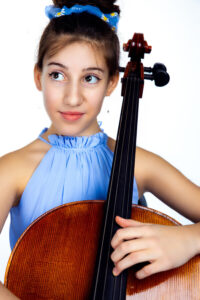 remarkable technique and a musical understanding beyond her years.” At the age of four, frustrated by having been made to play the violin, she took a child-sized violin, placed it between her knees, and exclaimed to her parents that she wanted a cello for her birthday, and it was then that her career as a cellist began.
remarkable technique and a musical understanding beyond her years.” At the age of four, frustrated by having been made to play the violin, she took a child-sized violin, placed it between her knees, and exclaimed to her parents that she wanted a cello for her birthday, and it was then that her career as a cellist began. ![]()
![]()
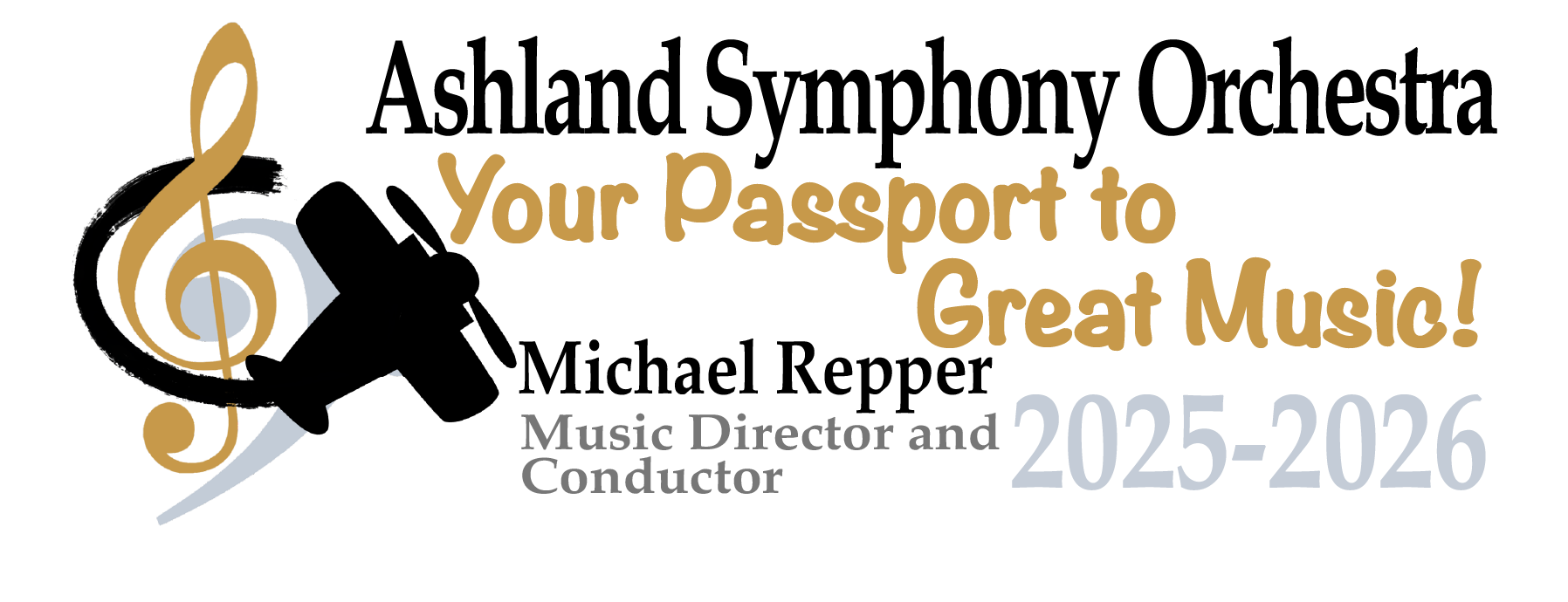
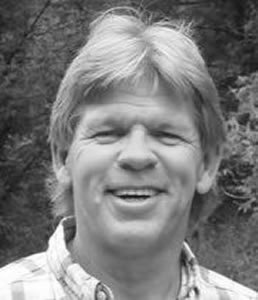 Orchestra. We look forward to seeing and hearing what our Grammy Award winning Music Director and Conductor, Michael Repper, in his second year, has in store for us. Michael’s enthusiasm, talent, and ability to “think outside the box” in dynamic, innovative, and delightful ways were evident in his inaugural year. He and our outstanding musicians presented an array of both familiar and new musical offerings and we look forward to more of that this year. As always, we strive to unite, educate and enrich our community through the engaging and transformative power of orchestral music experiences. We hope you find it inspiring and refreshing. Happy listening!
Orchestra. We look forward to seeing and hearing what our Grammy Award winning Music Director and Conductor, Michael Repper, in his second year, has in store for us. Michael’s enthusiasm, talent, and ability to “think outside the box” in dynamic, innovative, and delightful ways were evident in his inaugural year. He and our outstanding musicians presented an array of both familiar and new musical offerings and we look forward to more of that this year. As always, we strive to unite, educate and enrich our community through the engaging and transformative power of orchestral music experiences. We hope you find it inspiring and refreshing. Happy listening!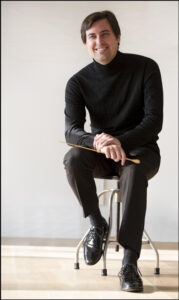 Dear Ashland Symphony Orchestra Patrons,
Dear Ashland Symphony Orchestra Patrons,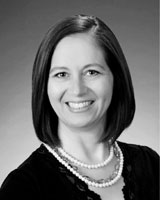 I am excited to be celebrating my 10th season with the ASO! This “Fabulously (un)familiar” season will bring you works by the old masters: Beethoven, Brahms, Mozart, and Tchaikovsky. But you will also hear the world premiere of Stefan Swanson’s Symphony No.2 “Lipsky”, Iubilo by Brian Nabors, Starburst by Jessie Montgomery, and the artistry of the young cellist Aurelia Faidley-Solars, just to name a few of the unfamiliar musical experiences you will have.
I am excited to be celebrating my 10th season with the ASO! This “Fabulously (un)familiar” season will bring you works by the old masters: Beethoven, Brahms, Mozart, and Tchaikovsky. But you will also hear the world premiere of Stefan Swanson’s Symphony No.2 “Lipsky”, Iubilo by Brian Nabors, Starburst by Jessie Montgomery, and the artistry of the young cellist Aurelia Faidley-Solars, just to name a few of the unfamiliar musical experiences you will have. Michael Repper is one of the most sought-after young conductors in the world. With work spanning four continents, Mr. Repper has an international reputation for engaging and exciting audiences of all spectrums, and for promoting new and diverse musical talents. In 2023, he became the youngest American conductor to win a Grammy® Award in Best Orchestral Performance.
Michael Repper is one of the most sought-after young conductors in the world. With work spanning four continents, Mr. Repper has an international reputation for engaging and exciting audiences of all spectrums, and for promoting new and diverse musical talents. In 2023, he became the youngest American conductor to win a Grammy® Award in Best Orchestral Performance.
